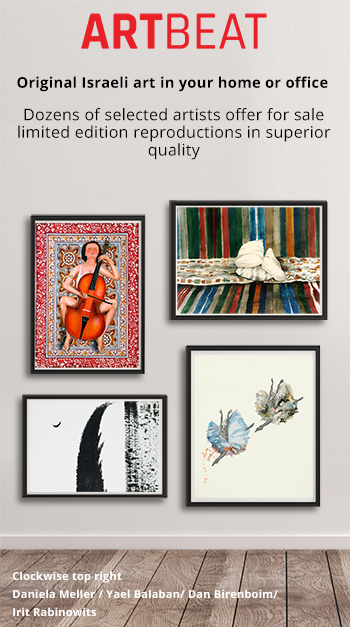Art Shows > Lili Fisher / 18 Partings from a Living Dad
Lili Fisher / 18 Partings from a Living Dad / Zaritsky Artists Houseטלפון - 03-5246685 10/11/2016 to - 03/12/2016 Lili Fisher / 18 Partings from a Living Dad The revival of the room’s space brings up a tapestry of memories that hangs over the viewing of Lili Fisher’s new exhibition, 18 Partings from a Living Dad. French author Georges Perec has already taught us that “a revival of the room’s space is enough to return, resurrect and reawaken the most elusive and the most significant of memories.” Gradually taking shape between the four walls of the room is the main scene of action for the narratives spread out across the large paintings. The father’s room in the assisted living facility is the point of origin for a story that takes shape on the canvas, a story that eventually merges with Lili’s memories of her own room from the days of her youth, before she had immigrated to Israel. These pieces are the culmination of a daughter’s long journey of parting from her father. On her journey, she moves between mental and physical times and spaces, touches and sometimes gets burned by memories, dilutes them with private fantasies and associations, and shapes them into narratives where reality and fantasy meet and often get mixed up. In most pieces, the father appears twice. As a strong, young man – the protagonist of the drama that plays out on the canvas – and as an old man watching the story the daughter wishes relate to him. Here and there, a layer of white paint covers his face like a mask, bringing to mind the visage of a ghost. The idea of a daughter’s parting from her father has become a mythological cornerstone: a prerequisite for progress and evolution, but also a painful loss of unity and closeness. Such is the Inuit myth of Sedna, a young woman who, in the midst of a lengthy process of parting from her father on a boat at sea, gets thrown overboard into the freezing water by her father, who then proceeds to fend off her repeated, desperate attempts to cling to the boat and return to him. Each time she clings, he cuts off some of her fingers. Each cut-off finger then becomes a new species of marine mammal. In the end, the father makes his way to the ocean floor, where Sedna resides, commanding the animals of the sea and the dead, and takes up a place beside her. Despite her newfound, high status, the pain in the stumps of her fingers continues to bother her, and the disability remains a limitation. The tensions are not relieved, the conflicts are not resolved, everything remains ambiguous. This point of ambiguity is characteristic of Lili’s work. The over-abundance of form and associative links between the images fuse together different worlds, different times and a personal iconography in one painting-space, thus preventing the viewer from reading the paintings as sequential, linear texts. The picturesque scenes are echoes of the memories, thoughts and emotions that arose, spontaneously and unpredictably, during the long work process. Love, compassion, criticism, argumentativeness, obedience, rebellion, anger, longing, recoiling, acceptance and non-acceptance well up from the pieces in a jumble, creating the tension and drama characteristic of the series as a whole. Like the Inuit myth, where separation turns out to be a state of continuous, eternal conflict, Lili’s paintings are where she parts from her father again and again, each time anew, with strong, mixed feelings. Beside the large, expressive paintings, the exhibition includes minimalist, almost ascetic video art. There is reconciliation and acceptance in these pieces. All of them feature the old father going through his daily rituals: unwrapping a piece of candy, pacing endlessly up and down the hallway, quietly staring off into space. The repetitive nature of these actions illuminates the spaces containing the movements of his life in the final stretch of his life’s journey. In these pieces, the bed, the room, the desk, the cup of tea on the desk, and the hallway become architectural attributes of the spaces of existence in old age, and at the same time, metaphors of the dark, detached corners found on the fringes of contemporary culture. Thus, these pieces crack open a narrow slit, through which we can see the fading, to which our eyes are usually wide shut. Ruty Chinsky Amitay, curator location - Zaritsky Artists House Time - 10/11/2016 to - 03/12/2016 Exhibition opening - 10/11/2016, שעה - 19:30 |
The content appearing on this page and the details of this exhibition are shown on the behalf of the advertisers and on their responsibility.
All rights reserved to - artbeat.co.il © Israel Art
|1|
